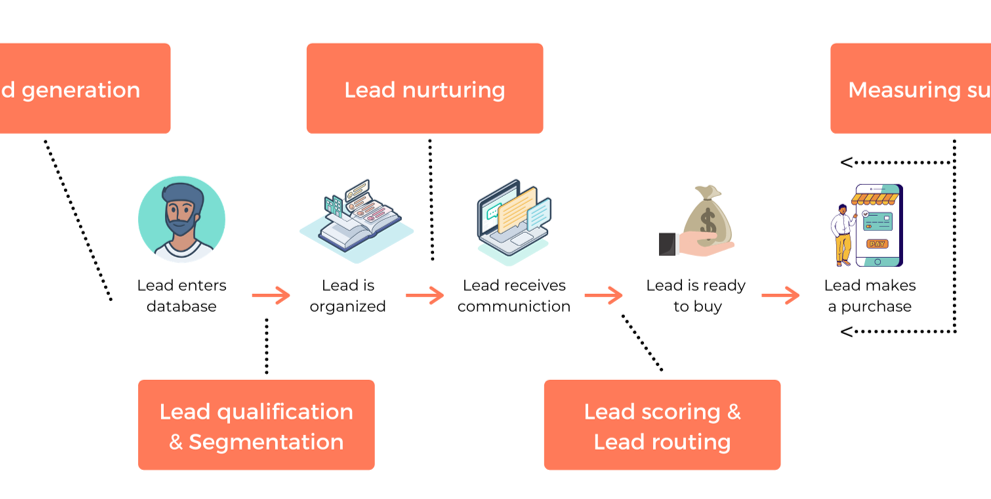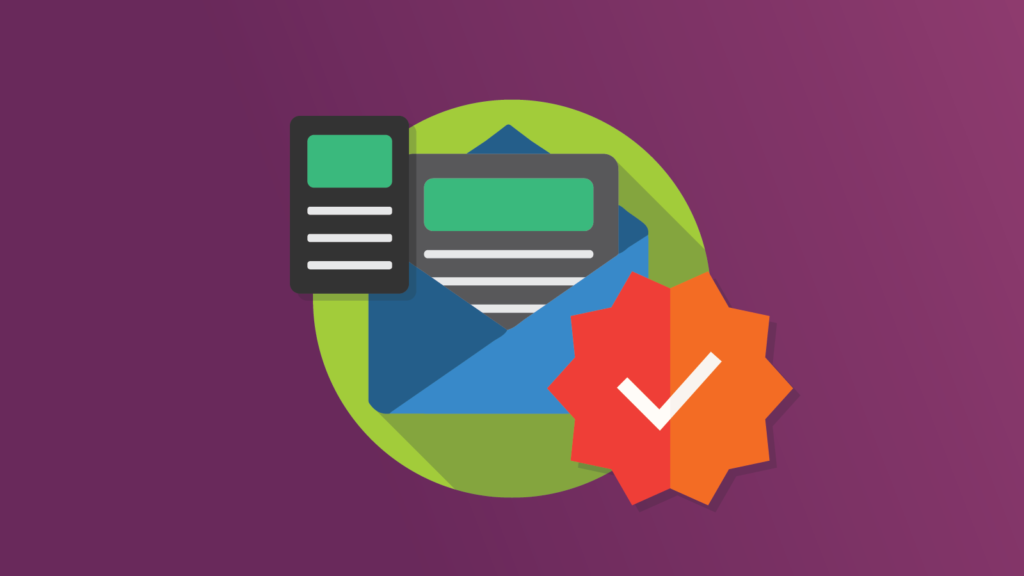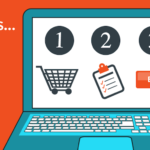The Ultimate 2024 Guide to Lead Nurturing: Strategies, Tips, and Best Practices

Did you know that 50% of leads in any given system are not yet ready to buy while 80% of new leads never wind up making a purchase at all? This is where lead nurturing comes in to lead buyers through a strategic process that keeps them engaged, building brand loyalty and trust.
We know that when website visitors share their information by filling out a form on your site, they become qualified leads. So what happens next?
Through lead nurturing, you build a relationship with them — from their first interaction to the time they have become a loyal returning customer. This article details everything you need to know about lead nurturing from the whys, the hows, and the whats. Let’s dig in!
What is lead nurturing?
Lead nurturing is the process of developing relationships with your prospects and customers at every stage of the sales funnel.
A successful lead nurturing process involves marketing and social listening to identify the needs of your audience and works to build trust, increase brand awareness, and build meaningful connections.
Lead nurturing campaigns communicate with each prospect and customer on an individual level, so it’s essential that whatever content you create — emails, digital ads, email copy, etc. — should be personalized.
How does lead nurturing work?
Only 21% of the non-nurtured leads will ever buy from you. So how does lead nurturing work exactly?
Lead nurturing is rarely about immediate sales. It’s about inspiring real engagement, building brand loyalty, and keeping your brand at the front of your audiences’ minds throughout recurring customer lifecycles.
Why use lead nurturing
Shortened attention spans and longer sales cycles can be a headache for marketers but lead nurturing helps you convert customers and build brand loyalty. Let’s have a look at some of the benefits of lead nurturing.
1. Engage with dormant leads
With lead nurturing you increase the probability of buying by maintaining relationships with customers. These relationships are critical in today’s sales cycles and lead to brand loyalty and trust over the course of time.
2. Shorten sales cycle
These days buyers are taking more time to explore their options and educate themselves before doing a purchase than they did in the past. So it’s quite expected that today’s sales cycles will be longer, which is why it’s so important to nurture your leads continually. By doing this, you shorten your sales cycle and convert more leads into buyers.
3. Increase customer engagement
To see results with your lead nurturing strategy, you must engage buyers. When you demonstrate value with your content and the knowledge you share, you create an impact with your customers. This ultimately leads to an increase in engagement and trust.
3 Benefits of lead nurturing
As discussed above, today’s sales cycles are significantly longer. It becomes crucial to nurture leads to convert them effectively and maximize profits. Let’s have a look at the benefits of lead nurturing.
1. Higher ROI
You can get more sales and ultimately increase your ROI with lead nurturing. Companies that excel at lead nurturing generate about 50% more sales-ready leads at a 33% lower cost.
2. Larger purchases
Lead nurturing motivates larger purchases. When you do proper targeting to the right people, it gets people to make 47% larger purchases than the non-nurtured leads.
3. More Sales
With effective lead nurturing, your leads are motivated to buy. According to research, 79% of marketing leads never convert to sales. This is because of a lack of lead nurturing.
8 Components of lead nurturing
Lead nurturing consists of cross-channel communication combining marketing automation and content marketing to create a holistic system that builds and maintains relationships with prospects and customers.
Let’s have a look at all the different types of platforms you can utilize to nurture your leads.
1. Multichannel distribution
To implement a successful lead nurturing campaign, all your channels should be interconnected. This helps you maintain contact with leads across the board.
2. Content marketing
If lead scoring is the backbone of a successful online marketing strategy, content marketing is the muscle. Content marketing involves creating relevant and valuable content and distributing it. This can include content for your emails, website, social media channels, video, podcasts, and more.
According to Paul Hickey of Data Driven, “one of the most useful ways we’ve seen to move people through the sales funnel is to present them with meaningful content that they want to look at. It keeps them interested, engaged, and can help them understand the value of the product or service without tuning out like they might with a pitch.”
3. Lead scoring
For a successful lead scoring strategy, sales and marketing work together to pinpoint where a particular lead is within the business’s buying model. This common point is the backbone of a strong lead nurturing system as it identifies when, where, and how to address each prospect with the most personalized communications.
Each lead scoring system is unique to each brand and includes lead fit (demographics), BANT (budget, authority, need, time), lead interest (how long are they one your site? What content are they engaging with?), lead behavior, buying stage and time.
4. Website
Your website is a great place to capture new email addresses by adding engaging forms and popups. It’s also a fantastic place to continue and start conversations. The web experience for your visitors should be dynamically personalized to reinforce and extend the dialogue started in emails.
5. Retargeting
With display ads and retargeting, you can create a consistent experience for your prospects and buyers across the channels.
6. Social
Social media is a crucial part of cross-channel nurturing. Running social campaigns is great, but making every campaign for social media gives better results. When you connect your lead nurturing to your social efforts, they enhance one another.
7. Direct mail
By adding direct mail to your lead nurture campaigns, you enhance personalization by adding a human touch to your campaigns.
8. Marketing automation
Marketing automation allows businesses to streamline and automate their marketing efforts across various channels. This increases efficiency and drives more sales. Automating a workflow aligns all your marketing efforts and messages to ensure the right lead receives the most relevant messages at the right time. So, make sure you have a creative automation to automate every part of the funnel.
How to get started with your lead nurturing strategy
Your lead nurturing strategy should start with your existing customers as they were once leads themselves, and you can understand from their journey. What marketing content did they relate with the most? Was there anything you could have done to help them reach their decisions faster? What are the best ways to refresh their journey for future prospects?
According to Michelle Chen of Woveon, you should know the lead well and know what their customer journey has been like. This comes with having a 360-degree view of the customer.
“Having a 360-degree view of the customer doesn’t just mean you have a CRM with their profile information and past conversations on email and over the phone”, she continues. “That doesn’t show the full extent of how the lead has interacted with the company. A 360-degree view means that you can see all of their interactions, whether they messaged you on social media, opened one of your marketing emails, swiped the loyalty card at a store, or spoke with an agent on the phone.”
Launching a lead nurturing program just lays the framework for what you need to convert new and returning customers.
1. Define your leads
Lead nurturing heavily relies on the cooperation of sales and marketing to work together. To determine the best lead for your organization, work on a joint lead defined prior by the collaboration of sales and marketing. First, assess your market, who is already in your database, your current prospects, which buyers are closing, and use all these parameters to determine all the lead scoring thresholds and lead engagement points.
2. Build your lists
According to research, you lose up to 25% of subscribers each year due to email attrition. Even not all engaged subscribers will become paying customers over time. So, to grow your business and set up a robust lead nurture program, you need to feed the top of the funnel with list-building tactics. You can do that by regularly giving your leads a checkup, identifying and scrubbing duplicate leads, and removing inactive or junk contacts.
3. Segment your audience groups
Segmentation is the most important part of any marketing campaign success — particularly with lead nurturing. The more you segment your audience, the more relevant your lead nurture programs will be.
If you are not relevant to your audience, they simply won’t pay any attention. I recommend using two dimensions of segmentation — the buying stage coupled with another measurement variable important for your business. This will create a happy balance as one variable is not enough, and each dimension beyond two creates an exponentially more complex process.
Maybe approach it as segments and subsegments. Adding behavioral segmentation and targeting to your lead nurture campaigns increases relevance and engagement cross-channel.
4. Test and optimize your campaigns
To optimize your campaigns, you need to test and monitor them continually. This helps maintain the program’s health and effectiveness. With testing, you get insights into the aspects that need to be optimized. These can include how many touchpoints you need to have within a specific period of time, the types of messages, the time of day, and so on. Features you can optimize are the lead nurture frequency, path, content and creative (the copy and the design), and the platform.
5 Things to consider for an effective lead nurturing strategy
Now that we have covered the process of lead nurturing in detail and have a basic understanding of the strategy, you need to take the following factors into account:
1. Campaign types
You can have many different types of lead nurturing campaigns. The right one for your business depends on what you want to accomplish from the campaigns. Do you want to revive inactive leads? Or do you want to generate sales leads? Is your goal to remind current clients that renewals are up soon? By determining the answers to these questions, you will be able to figure out the right kind of campaign to launch.
2. Campaign content
Your content depends on the types of campaigns you are creating. For example, if your campaign is intended to generate sales leads, identify and send content you know your prospects will be interested in. Create different kinds of content to send based on your prospects’ journey in the sales cycle. Think of each piece of content you send as a new chapter in your marketing story, it will help your audience relate with you.
3. Campaign complexity
Your lead nurturing campaigns can consist of a number of different pathways for your audiences. How complicated or simple you would like these pathways to be is up to you. It all depends on what you would like your audience to engage with and at which touchpoint. Lead nurturing campaigns can have a linear structure in which the prospects move straight through, or they can branch out to different paths that the prospects follow based on their interests, personas, and actions.
4. Nurturing different audiences
To create highly targeted lead nurturing campaigns, you need to segment your audience. If you want to nurture a specific audience group, like new prospects or established customers, you can segment them all into different groups. You can also segment by audience location, product interest, and engagement level. Once you have filtered your audience according to your own requirements, new prospects will automatically be added to the right groups and lists.
5. Lead nurturing for small business
Small businesses have some advantages when it comes to lead nurturing. As a small business, you can have a more personal relationship with your customers, and they are often able to move faster than large businesses. Lead nurturing campaigns give small businesses the chance to introduce themselves and their unique solutions to prospects and stand apart from the competition. Most prospects may not be ready to do business yet but lead nurturing allows small businesses to stand out in their target audiences’ minds.
Lead nurturing with emails
Email is hands down the best way to nurture leads and convert them into sales. You can engage with prospects, send them valuable content, keep them updated with your products and services, send them offers and discounts, and build brand loyalty through effective email campaigns.
With email automation in the mix, you don’t have to put a lot of effort into lead nurturing. Just set it up and let the automation take care of it. But it’s important to remember that even with automation, personalization is the key to higher ROI.
5 must-try automated email lead nurturing strategies
Here are five strategies for automated email lead nurturing campaigns.
1. Write scrumptious emails your users can’t get enough of
Yes, you can’t automate email writing, but it’s a vital piece of the puzzle. At the heart of email, automation is one powerful word that undergirds every campaign — email.
Without a firm foundation of excellent emails to drive your lead nurturing strategy, your sleek automation workflows will be duds. You can’t automate lousy emails and expect to get results in your campaigns. That said, here are three fundamentals on how to write delightful emails that get clicked, opened, and read.
1.1) Have a goal for every email
Establish the reason you want to write an email before you type a single word. This will make your content focused, relevant, and engaging.
Do you want the reader to:
- Click-through to a landing page?
- Download a resource?
- Buy a product or service?
- Watch a video or webinar?
- Schedule an appointment?
- Sign up for a free trial?
Your goal must drive your whole email creation process. Goal-driven emails convert better than aimless emails.
1.2) Write a powerful headline
Your email lives or dies on the quality of your headline. To write a good subject line, follow the following tips.
- Make it short
Straightforward headlines drive action better than lengthy ones. Studies show nine words or fewer is the ideal length in most cases. Plus, short subject lines ensure you communicate your message before the rest of the words get cut off because of limited space.
- Should be clear
Clarity always trumps complexity. Users quickly grasp easy-to-understand subject lines and open the email to check out what’s in store for them. Complicated ones slow down or frustrate readers and don’t inspire them to open the email.
- Should be benefit-driven
Humans are selfish by nature. They are always asking what’s in it for me (WIIFM) at the back of their minds before they do anything. If your subject lines show them how they will benefit from consuming your content, they’ll gladly open your emails.
1.3) Keep messages short and sweet
We live in an uber-busy world. So most people don’t read emails; they skim through them.
At least that’s what they do in the beginning before they decide whether to consume the entire message line by line. To increase the chances of getting your emails read, keep them brief and format them for easy reading by using:
- Short sentences.
- Brief paragraphs.
- Bulleted lists.
- A lot of white space.
- A prominent call to action.
Now that you’ve got email copywriting dialed in let’s get into the mechanics of how to nurture and convert leads through smart email automation.
2. Woo new users with warm welcome email series
Your first email to new users who’ve just subscribed or made their first transaction with your brand is crucial. It sets the tone of your relationship with them.
The best part?
Welcome emails have stratospheric open and click-through rates of 91.43% and 26.9%, respectively.
That’s over 5x the average open rate and 10x the click-through rate of regular email campaigns. So including a welcome series in your email automation workflow can boost conversions significantly.
Here’s how to do it.
2.1) Tell your brand story
Naturally, new users want to know a bit more about you. Share your brand story memorably so users fall in love with your brand. Focus on your unique selling proposition or USP.
2.2) Set expectations
Tell new subscribers exactly what to expect from you. For instance, what kind of emails will you be sending, e.g., tips, free downloads, or curated content? How often will you be emailing them, e.g., twice a week, five times a month, etc.?
2.3) Promote your best content
Use the excitement and goodwill of a fresh relationship with new users to drive traffic to your prime content assets. Point out your best and conversion-optimized posts and case studies so they consume them and also get impressed by your brilliance.
2.4) Ask them to whitelist you
To ensure your audience receives all your upcoming emails, you can use your initial email to tell them how to whitelist you. Explicitly instruct users on how they can add you to the approved senders’ list.
2.5) Bolster benefits
Welcome emails give you a tremendous chance to brag about the value you provide. When they see how valuable connecting with you will be, they will stay on your list, and you will sell to them repeatedly.
Whatever you do in your welcome email sequence, make sure you make a superb first impression on your audience. Send 4-6 emails in your series. That’s enough to build trust without overwhelming your audience.
According to Raelyn Tan, an email list building expert, you should create an engaging welcome sequence that “value-bombs” your subscribers and leaves them impressed with you and your business. When new people subscribe, they really don’t know much about you at all, and you don’t want to send them a sales broadcast accidentally. This is where a great indoctrination sequence comes in—you send specific content to your new subscribers to get them settled into your community.
3. Segment your email list for relevant, personalized content
We have already discussed the importance of segmentation for a more effective lead nurturing process. Email personalization is the open secret of high-converting emails, and the foundation of personalization is segmentation.
You can’t send blanket emails to your entire list and expect users to engage with them. Segmentation and personalized content improve your conversion numbers all around as these stats from Backlinko reveal:
- Segmented email campaigns generate 100.95% higher click-through rates than non-segmented campaigns.
- Segmented email marketing campaigns boost revenue by as much as 760%.
- Trigger-based emails perform 3x better than batch and blast emails.
- Emails with personalized subject lines are 26% more likely to be opened.
Let’s look at nurturing leads and prospects through various segmentation tactics.
Email Segmentation Types
Here are the four segmentation types and how to nail each one.
1. Demographic Segmentation
Demographic segmentation categorizes your email list according to their age, gender, ethnicity, religion, education, and income.
People who share these traits have similar goals, struggles, and dreams.
Therefore, if you group them appropriately, your emails will resonate with them if you group them appropriately. They will be more likely to enjoy your content and respond to your offers.
2. Geographic Segmentation
Geographic segmentation divides consumers according to where they live.
You can determine your customers’ physical location using intelligent geolocation software. Such programs can group people through:
- Country
- Region
- City
Knowing where your customers come from sharpens your marketing communications. For example, certain products are popular in certain areas. So, through the geographical location, you will send the right offers to the right people and hike conversions.
3. Psychographic Segmentation
Psychographic segmentation groups buyers based on their psychological traits such as interests, values, beliefs, and lifestyle.
Such characteristics make it easier for shrewd marketers to hone in on their audience’s pain points and longings. When you wrap your messaging around your leads’ pain points and dreams, your content scratches their itches.
They become more responsive to your campaigns.
4. Behavioral Segmentation
Behavioral segmentation splits customers based on the actions they take when interacting with your brand. Those actions can be on your blog, online store, or email content.
Base your segmentation on hyper-specific behavior like:
- Purchase history.
- Browsing habits.
- Content likes and dislikes.
- Engagement levels like opens vs. non-opens.
- Sales funnel stage.
- Past product ratings.
Segmentation fills your funnels with hyper-focused categories.
You then drip feed these handpicked groups of leads with relevant content on autopilot. Email by email, content piece by content piece, offer by offer, you build trust and eventually close more sales.
4. Tie your free content giveaways to different products
Generic offers don’t convert well. Automate your lead nurturing campaigns from the prospects’ first touch. Catch them when they make micro-commitments like downloading your free resources.
Instead of broad lead magnets, have laser-specific freebies that perfectly match certain products or services you provide.
Each lead magnet leads to prospects down a specific funnel.
- A case study prompts an email trail that leads to product A.
- A free webinar triggers an email series that leads to product B.
- An ebook sets off emails that coax users towards product C.
- A video demo activates an email sequence tied to product D.
Through smart email automation, each lead magnet activates a pre-planned path that guides users towards specific products because you’ve crafted the buyer journey with care and paved it with on-point content, conversions, and sales skyrocket.
The good news?
Once you’ve written and set up all the email sequences, you sit back and let your email service provider automation powers get to work. You nurture and close leads without lifting a finger.
Below is a sample lead magnet automation workflow.
Your lead magnet workflow can do more than deliver the resource. It can deepen your relationship with leads and sell your products.
5. Let data guide your email automation efforts
In modern marketing, there’s no need to fly blind. Clever email service providers and lead capture tools like Mailmunch produce gobs of data you can use to automate lead generation and nurturing.
There are so many ways to automate lead nurturing through data.
- Automatically resend an email with a different subject line to prospects who didn’t open the original email.
- Offer discounts or bonuses to customers who buy goods that meet a certain order value threshold e.g., orders worth $200+
- Send content to potential customers who downloaded a particular lead magnet.
- Present gifts to loyal users who meet a preset number of opens or click-throughs over a certain period.
- Determine the right email cadence for your audience by digesting the numbers. As a case in point, you can test which sales/welcome series performs best between a 5-part or a 7-part one and automatically deploy the winner.
- Follow up with people who haven’t engaged with a specified number of emails for a particular period.
- Automatically pick important dates in the life of your prospects and reach out to them then, e.g., send happy birthday wishes or give them a gift after they’ve used your product for a year.
- Use eCommerce data to create magnetic abandoned cart email campaigns to recover lost sales.
You can set up many dynamic email lead nurturing campaigns that suit your marketing context as shown above.
Take your lead nurturing strategy to the next level with Sasy
Lead nurture campaigns are a successful way for businesses to make an impact on their audience, build trust and loyalty, and establish a relationship that drives sales and increases ROI.
When you invest in these organic, inbound lead nurturing initiatives, you are more likely to build a loyal audience that engages with you and buys your product.







